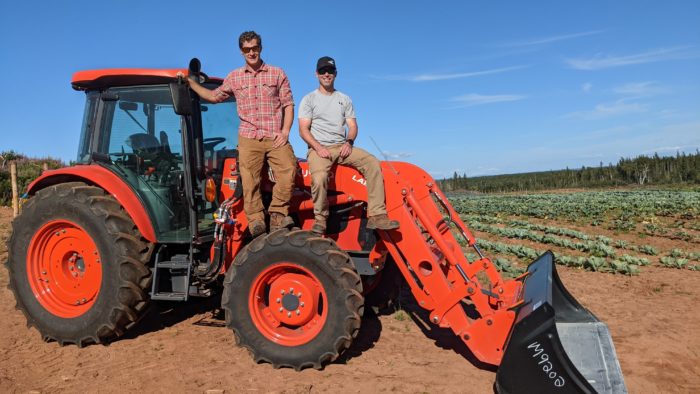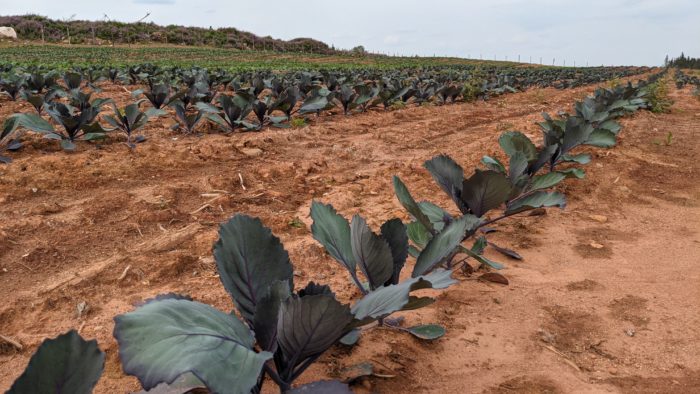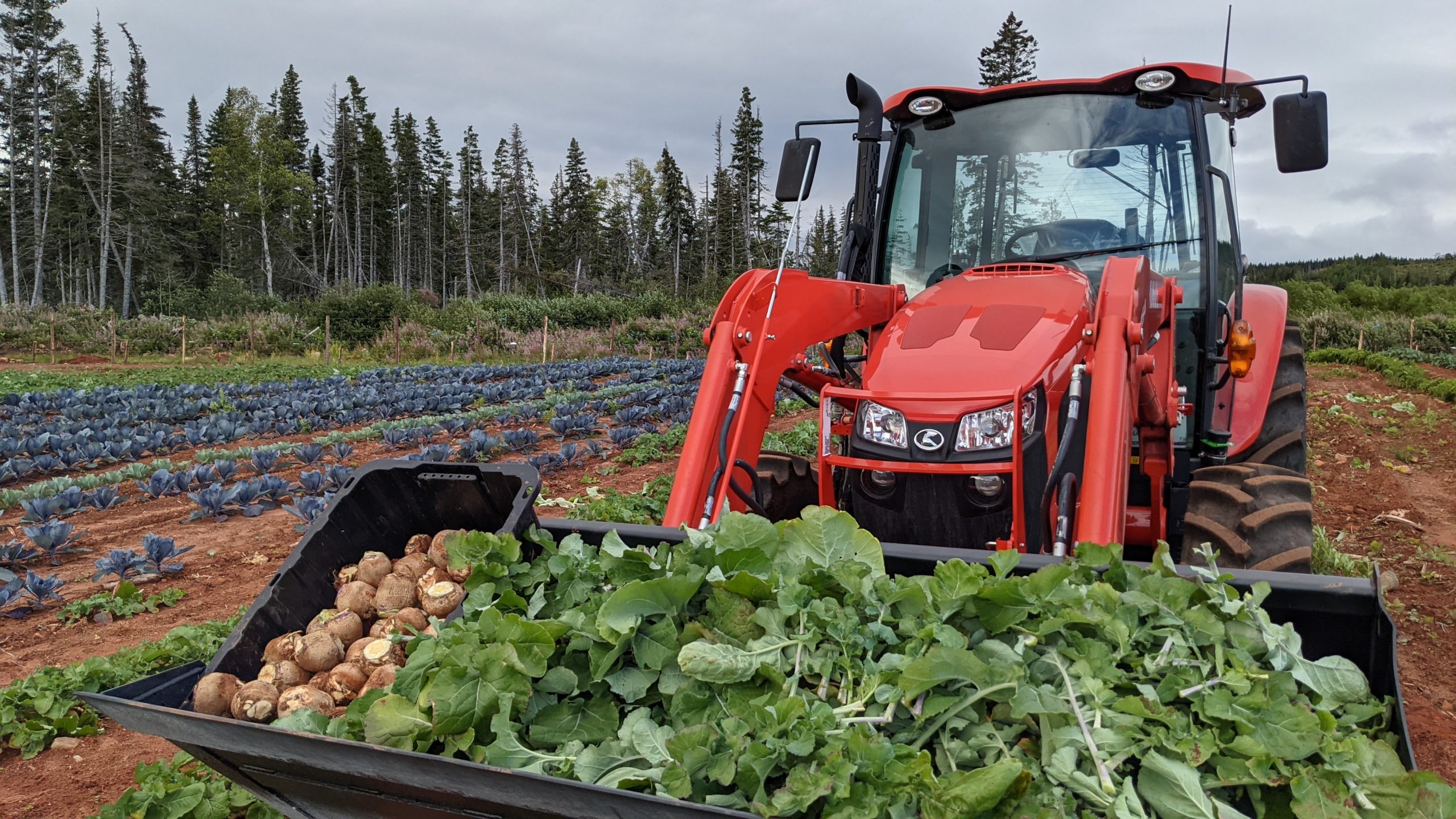Newfoundland potato production is going to double thanks to new crown land leases.
As potato growers across the country geared up for planting this spring, three farms in Newfoundland and Labrador found themselves in an enviable position — they suddenly had more acres than planned to roll into production.
In April, the Newfoundland and Labrador government announced the successful applicants for new crown leases of agricultural land. In total, the government released 700 acres of cleared land at three sites, each intended primarily for potato production.
“The ability to grow and produce our own food here at home is crucial to this province’s future. Our geographic location and the recent pandemic remind us that access to fresh, local food and improved food self-sufficiency here at home has never been more important,” explains Derrick Bragg, minister of the Newfoundland and Labrador department of fisheries, forestry and agriculture, in an email.
Based on a three-year rotation, approximately 230 of the 700 acres will be planted to potatoes annually. Bragg predicts the land has the potential to yield over 15 million pounds each year, which will more than double Newfoundland and Labrador’s current potato production and help the province achieve its goal of doubling its food self-sufficiency to 20 per cent by 2022.
Bragg says land development initiatives are a vital part of supporting Newfoundland and Labrador’s vision for a stronger agriculture sector. At a lease rate of $4 per hectare, per year and a lease length of 50 years, the crown land leases help increase the availability of affordable farmland on the island.
“These leases are one of the best mechanisms the provincial government has to protect valuable agriculture land and ensure it is used for agricultural purposes,” says Bragg.
Who are the Potato Growers?
Adam Anderson and his business partner Lukas Doman received a 176-acre parcel at Deadwater Brook in northwestern Newfoundland, of which 100 acres is arable, cleared and at least “somewhat ready to plant,” he says.
“I think (the lease system) is a really great concept. The fact that government has given us this opportunity, we’re going to work incredibly hard to make it successful,” he says.

This year, Anderson and Doman spent significant time investing in ground prep and site analysis, including taking high resolution aerial imagery and creating digital elevation models for the site, in order to best understand the land they’ll be working. They also trialled the land, planting about 25,000 vegetable plants including potato, cabbage, broccoli, leaks, onions and more.
“One hundred acres is definitely going to keep us busy for a number of years,” says Anderson. “We’re also looking at greenhouses to maximize opportunities on the non-arable land. We have a multi-year plan to get this whole thing into production.”
Due east of Anderson’s new land, farmer Louis MacDonald of M&M Farming Company Ltd. received 500 cleared acres in a 1,300-acre block at Junction Brook near Deer Lake, N.L.
The large plot changes everything about his operation.
“Until this spring, we were dependent on other land-owners. The lease gives us the opportunity to have our own land for the long-term. The benefits of that are obvious in terms of security and stability so we can invest in the land and develop our business,” says MacDonald.
Further east still, farmer Gordon Peddle received 70 cleared acres in a 369-acre plot at a former seed potato farm at Glenwood in northeastern Newfoundland.
“I’m not 100 per cent sure if there’s growth potential in the whole 369 acres or not just yet. The government says there’s not, but I’m personally looking at it,” explains Peddle. “I’ve bought some equipment in anticipation.”
This year, Peddle planted 20 of the acres to potatoes and seeded the rest to cover crops. He hopes to plant 50 acres to potatoes next year.
New to the Farming Game
The winning applications were chosen based on a variety of priorities: commercial viability, the applicant’s need for more land, the degree by which additional land would improve the viability of the farmland, the applicant’s management and use of both their existing land and the proposed land, and the markets/quota available to the farm. Notably absent from the list was experience. In fact, all three of the successful applicants are relatively new farmers.
This is Peddle’s second year of farming. Last year, his first farming, he planted 24 acres; in 2021, he planted 34.
“I basically had a calling to go farming. I figured that, before I get too old, I might as well give it a shot,” he says.

While Peddle may not have much farming experience, he brings strong business expertise from building and operating several successful trucking enterprises. He has a clear marketing plan for his future crops, has invested in operating equipment to produce and move those crops, and has an appetite for opportunity.
In addition to the newly acquired leased land, he’s struck agreements with dairy farmers in the area to rotate their crops for them on a regular basis, and he currently has applications pending for additional leases.
“From where I sit today, I need more acreage to get to that magic, optimum number that I feel will generate profitability. The long and short of it is I’m going to need more land,” he says.
While access to land is a huge factor in farming success, Peddle reminds that it’s just one component to running a successful farming business.
“If you’re thinking about getting into farming with little to no investment, you’ve come to the wrong business. That’s not possible. Even though land acquisition is one of largest obstacles to getting started, gone are the days when you can use labour (instead of equipment). It’s too costly. You’ve got to produce in higher volume. Even though I’ll probably never get to magnitude of some of the higher producers in Canada, I’ve got to be able to produce efficiently and effectively enough to compete.”
MacDonald is also a new entrant farmer. MacDonald planted 27 acres in his first year of farming in 2019, 55 acres in 2020, and – thanks to the new crown land lease acquisition – 110 acres in 2021, including 35 acres of potatoes on the newly leased land. He plans to seed 100 acres of hay land this fall. From there, he anticipates it will take three to five years to develop the cleared crown land to the point of cycling it all into three-year potato rotation.
While gaining access to land is amazing, MacDonald knows it’s not a no-strings gift.
“The first thing we did when we got the lease was go out and buy a new tractor and a quarter million dollars worth of hay equipment. As we progress and expand, we’ll have to spend more money and time and energy to clear more land. It’s an investment by government in us, but it’s also an investment by us into the land.”
MacDonald believes the government chose his application based on his business plan and enthusiasm, but also one other key element — his access to winter storage.
“It’s all well and good to develop land, but you got to ensure you can overwinter (what you harvest). We were ready to go with storage, and that was critical to our application. I think storage is an area that the potato industry does need to expand in this area.”
Anderson and Doman are also new entrant farmers. Anderson says he’s been looking for a land-base for several years. They had a hunch that parcels would be tendered at some point, so prepared a solid business plan long in anticipation.
“When the opportunity came up, we were ready,” he says.
Anderson says he is excited and honoured to be part of producing food in Newfoundland for Newfoundlanders.
“Part of our goal – and we did it with some of our very first crops that we ever pulled off our land – is to bring it to the people. Talking to the public and seeing how much emphasis people put on shopping local, seeing how passionate they are about what we’re doing, that definitely contributes to our drive.”
Header photo – A tractor in at Deadwater Brook in northwestern Newfoundland with the first harvest from the field in the bucket. Photo: Adam Anderson
Related Articles
Three Potato Growers Awarded Leases in Newfoundland and Labrador









